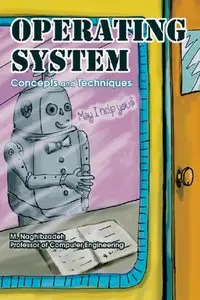M Naghibzadeh, "Operating System: Concepts and Techniques"
iUniverse, Inc. | 2005 | ISBN: 0595375979 | 296 pages | PDF | 1,5 MB
iUniverse, Inc. | 2005 | ISBN: 0595375979 | 296 pages | PDF | 1,5 MB
Operating System is the most essential program of all, without which it becomes cumbersome to work with a computer. It is the interface between the hardware and computer users making the computer a pleasant device to use. The Operating System: Concepts and Techniques clearly defines and explains the concepts: process (responsibility, creation, living, and termination), thread (responsibility, creation, living, and termination), multiprogramming, multiprocessing, scheduling, memory management (non-virtual and virtual), interprocess communication/synchronization (busy-wait-based, semaphore-based, and message-based), deadlock, and starvation. Real-life techniques presented are based on UNIX, Linux, and contemporary Windows. The book has briefly discussed agent-based operating systems, macro-kernel, microkernel, extensible kernels, distributed, and real-time operating systems. The book is for everyone who is using a computer but is still not at ease with the way the operating system manages programs and available resources in order to perform requests correctly and speedily. High school and university students will benefit the most, as they are the ones who turn to computers for all sorts of activities, including email, Internet, chat, education, programming, research, playing games etc. It is especially beneficial for university students of Information Technology, Computer Science and Engineering. Compared to other university textbooks on similar subjects, this book is downsized by eliminating lengthy discussions on subjects that only have historical value.
Download



